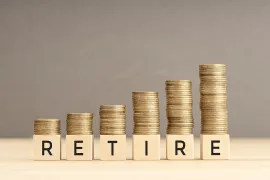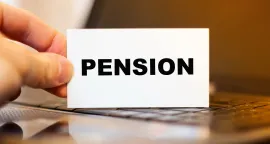‘A lifetime of Careful Planning’ Means Couple with Medical Issues Still on Track for Solid Retirement
These exceptional investors can secure even more investment income by cutting down management fees; plus they may want to sell one or two of their three cars
This couple pays substantial management fees totalling 1.9 per cent, which is a lot for their level of assets.
Andrew Allentuck
Situation: Husband on disability for decades and recently retired wife worry retirement income isn’t adequate
Solution: Cut costs and lower investment management fees to build investment income
A couple we’ll call Steve, 58, and Marianne, 56, live in B.C. in a small town far from Vancouver and its soaring property prices. Both are retired — Steve, formerly an engineer, due to a devastating auto accident two decades ago that left him on disability; Marianne, formerly a health care professional, due to her own medical issues.
Steve gets $2,993 per month from his job’s disability insurance to 65 when it ends and adds CPP disability of $1,168 which will drop to a regular CPP cheque of about $1,000 per month at 65. Marianne has a $2,100 monthly job pension that drops to $1,100 at 65 when her CPP begins at $800 per month. Both will receive full Old Age Security benefits of $601 per month at 65. Present pension and disability income adds up to $6,261. They spend $7,488 per month, adjusting the gap with tax refunds for $6,000 annual spending on uninsured medical and drug costs and dividends from $340,000 of taxable investments. They want to sustain present spending throughout their retirement.
Steve and Marianne, who are exceptional investors, keep very good records. Yet they fear that their present financial health is at the mercy of government pension and tax policies which could change to their disadvantage.
This Ontario couple is riding rental cash flow to a five-star retirement
Alberta couple with three homes needs to simplify their finances before retirement
Couple with $2.9 million in assets and no debt think they won’t be able to make ends meet in retirement
“I don’t trust that Old Age Security will be fully available to us in future,†Steve says. “I worry the OAS clawback could be triggered at an income lower than the present $75,910 or its equivalent in future to reduce payouts.â€
Diversified Financial Assets, High Management Fees
Family Finance asked Derek Moran, head of Smarter Financial Planning Ltd. in Kelowna, B.C., to work with Steve and Marianne. His view — yes, their RRSP assets of $859,000, $180,000 in TFSAs and $340,000 of taxable securities should keep them afloat in future. However, they pay substantial management fees totalling 1.9 per cent, which is a lot for their level of assets, for which they have a small collection of highly regarded mutual funds. Those fees do not necessarily produce results good or bad, but the annual cost, $26,200 for their $1.379-million assets under management, are significant. The advice, though costly, has helped them generate an average seven per cent annual return on their portfolios.
At their level of wealth, they could pay perhaps 1 per cent for management costs. The 0.9 per cent fee savings on $859,000 of RRSP assets would be $7,730 per year and fees on other assets under management, including $180,000 of TFSAs, would add $1,620 of savings. Fees saved on the same basis on their $340,000 taxable account, $3,060, would bring total savings by cutting 9/10ths of one per cent of fees to $12,410 per year. Steve and Marianne should shop the market for registered portfolio managers who would handle their investments for one per cent per year, which is almost a standard fee for their level of wealth, plus very low trading fees. For now, we will project returns based on investments as they are rather than what they might be in future.
Retirement Income
Their $859,000 of RRSP assets growing at 3 per cent over the rate of inflation and paid out for 37 years to Steve’s age 95 would support a pre-tax income of $38,750 per year. Their $180,000 of TFSA assets invested and paid out on the same basis would generate $8,120 per year. Their taxable assets, likewise invested on the same basis would provide $15,338 per year.
Putting the diverse sources of pension and investment income together, the couple will have $25,000 of Marianne’s civil service pension and bridge income to her age 65, $35,940 of Steve’s disability income to 65, his $14,016 CPP disability income, and $62,208 of RRSP, TFSA and taxable investment income. The total, $137,164, split and taxed at an average rate of 17 per cent with no tax on TFSA payouts would provide $9,890 per month for spending, far more than their present level of spending and above their $7,500 monthly retirement goal.
When both Steve and Marianne are 65, they will lose Steve’s nearly $50,000 of disability payments. They will have Marianne’s pension income of $13,200, two CPP benefits totaling $21,600, two OAS benefits totaling $14,424 per year and the same RRSP, TFSA and taxable portfolio income of $62,208 for a total of $111,432. After splits of income and 14 per cent average tax with no tax on TFSA payouts, they would have $7,985 per month to spend. If we blend the periods before and after 65, they can sustain spending of about $8,400 per month.
Costs and Risks
They can cut future spending by enrolling in a B.C. property-tax deferral program for seniors that charges no more than one per cent a year of tax with no compounding. That would take $4,300 out of their annual budget at a cost of $43. They might look into health-care insurance plans which could reduce their $6,000 annual tab for dentistry, physiotherapy and so forth. In any event, their income would cover expenses before they are 65 and after.
The risks to the outlook are a broad and enduring collapse of financial markets in which they invest. There will be downs, but there is no historical evidence to justify fear of permanent collapse. About a third of their post-65 income will be from Marianne’s government pension, CPP and OAS. They can create some portfolio insurance by moving a fraction of their investment capital into short government bonds or 5- or 10-year government bond ladders. Each structure minimizes the downward pressure on bond prices when interest rates are rising and makes old, outstanding bonds less attractive and therefore cheaper.
There are also potential cost controls — sell one or two of their three cars, keeping the newest, a 2016 model. That would retain cash and cut maintenance costs.
On the whole, Marianne and Steve don’t have any grave foreseeable issues, Moran says. Splits of income will keep them far from the OAS clawback even if it is notched down a bit.
“A lifetime of careful planning, Steve’s two decades of disability income, some of which was not taxable, two OAS and CPP benefits, and ample and well managed taxable and registered investments have given this couple a lot of future income security,†Moran says.
(C) 2019 The Financial Post, Used by Permission

































